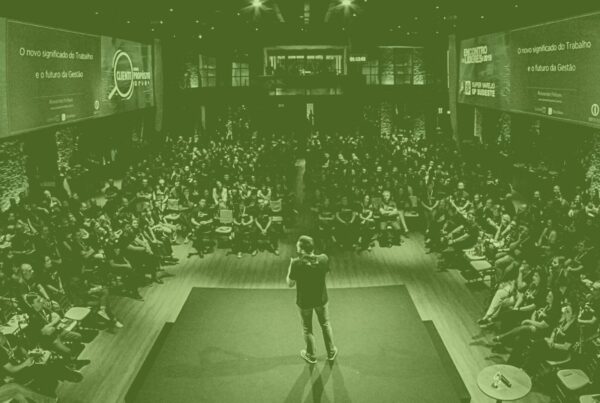Just like with events, the main purpose of translation and captioning is to bring people together and break down the barriers between them. While we might have spent much of the last year and a half isolated from people, the barriers nonetheless came crumbling down. The pandemic ushered in an era of far more inclusive and accessible virtual events and made us re-evaluate some of the event-planning practices we started to take for granted.
Remember! We learned a very valuable lesson the hard way: an event on the other side of the world can impact the entire globe. Sometimes, that brings about a pandemic, and other times, it increases your ROI. Yes, you read that right. Now that virtual events are fairly normalized, it’s never been easier to access a global audience. The only barrier left standing in the way is language. Whether you’re planning a company event or an exhibition, it’s key that attendees all have the ability to efficiently communicate with one another and engage with the content.
So, why worry about what might get lost in translation? Instead, let’s look at all the things that can be found in captioning and translation for events!
Translation For Events Matters. Here’s Why.
After the pandemic hit us, event planners had no choice but to make an unprecedented pivot to virtual events. People all over the world found themselves cooped up in their homes, combating webinar fatigue and stress.
But there’s a silver lining. With the power of virtual events, event planners all of a sudden had a chance to reach a larger audience and get their name out there. Additionally, virtual events turned out to be more inclusive: more attendees got access to content, often for a fraction of the price of the event’s in-person counterpart.
It’s not just the attendee who saves some money, it’s also the event planner. Virtual event budgets typically don’t include travel costs and have lower registration costs. But rather than pocketing all that money, you should invest it into translation for events.
Why?
When translation for events is utilized, planners can reach a larger audience, far beyond their English-speaking customers. Not only does that make the event far more inclusive, but it also makes it easier for non-native speakers to stay engaged during the event itself. Just imagine how flattered they’d be to see you thought of them! And even though English is the most common second language in the world, some things, unfortunately, don’t always translate well.
Let The Translators Join The Conversation Early
Let’s get down to business. You have decided you want to elevate your event with translation, captioning, or interpretation services. There are many ways to get the translators involved.
Translators can log into the event virtually, using a remote simultaneous interpretation (RSI) platform, such as Interprefy. The platform can be embedded into your virtual event platform, or alternatively, you can use streaming tools, such as vMix or other software. Zoom, for example, allows translators inside the platform to host breakout rooms.
At in-person events, attendees are typically given a set of headphones and they simply pick a channel that features their language. When translators also attend the in-person event, they sit in isolation booths in the back of the room.
Once you know you’ll be using captioning and translation for events, it’s best to act fast. The more translator knows about your event upfront, the better. That way, they can familiarize themselves with the content, the names of the speakers, and your industry in general. Depending on the content, you can ask for a translator who is specialized in your field, e.g. a medical translator or a legal translator.
A cherry on top is picking a language professional that matches the tone of your speakers and presenters. It would certainly look odd to have an animated speaker on the stage, while the translator is putting the attendees to sleep with their soothing voice. And finally, confirm translation needs with the attendees during your registration process – just to make sure everything is set up for success.
 Translation & Captioning For Events Won’t Break The Bank
Translation & Captioning For Events Won’t Break The Bank
Speaking of barriers, event planners often worry that their event budget is too small to include any services that aren’t absolutely necessary. Curious how much do event translation and captioning cost? Read on!
A virtual translator or interpreter costs approximately $250-350 per 10-hour day, while an in-person translator costs between $350 and $450. The final cost of translation services depends on several factors, such as the target language, the number of attendees, and additional costs for platform integration. The price of captioning is based on word count or per minute.
If you’re planning on bringing a translator to an in-person event, keep in mind that the location of your event matters, too. The bigger the city you’re in, the more likely you’re going to find a translator and save money on costs for travel.
AI Captioning & Translation For Events
When we think of AI for events, our minds go to chatbots in event apps. However, AI can also take care of your translation and captioning needs. AI captioning is surprisingly accurate and cheaper than a human translator, but you always need to keep in mind that it’s not completely foolproof. Sure, you can blacklist certain words, but the risk of AI making a huge mistake remains. And that can be extremely detrimental to your entire event and ROI.
Interpreters & Translators For Events: Minimizing Risk
So, is it better to have a translator join the event virtually, or is it better they attend the event in-person? Which option is safer? As with everything else in life, there’s no straightforward answer.
If you’re planning on producing a complicated, bandwidth-heavy (virtual) event, then it’s best you try to eliminate as many pain points in the communication structure as possible. Leave nothing to chance – assess your AV needs in advance and review them with the venue or virtual platform as well. Having a translator right by your AV team’s side or in the interpreter booth will minimize the risk of any potential communication breakdowns.
However, there’s another, much more pressing risk to consider. One of the main tenets of COVID-compliant events is having as few people in the room as possible. Virtual translators and interpreters help mitigate the risk of infections, especially if they’d otherwise be flying to your event from a high-risk area.
 The Perks Of Translation & Captioning Beyond Events
The Perks Of Translation & Captioning Beyond Events
We’ve already established that adding captions to your virtual event content makes the event evergreen, more accessible, and easier to follow for non-native speakers. But what if we told you that you can take the perks of translation and captioning to the next level?
Ever since video content first appeared in its rudimentary form, it became an attractive alternative to reading. Today, marketing departments all around the world harness the power of video to get their name out there. So, here’s a free-of-charge marketing tip: start producing videos and expand your reach! Blogs and written content have already started to take a back seat.
However, reading is not going extinct any time soon. It’s just changing form. Let’s be honest, most of the time, we can’t be bothered to put the sound on when we watch videos. Instead, we read the captions. In fact, 80% of us are far more likely to watch the entire video if we can read the subtitles. And since 85% of Facebook videos are watched without the sound on, you’re far more likely to capture the viewer’s attention if you throw in some captions. And besides, how are we supposed to know what the video is about without captions?
It’s not just us humans who love captions, though. Google, too, now knows how to identify captions in videos, which in turn improves SEO. And when search engines pick up on your content, you’re far more likely to see an increase in video views. Win-win!
Producing Engaging Global Events
Hopefully, you now understand that translation for events pays off – no matter what way you look at it. It increases comprehension, engagement, and diversity – and that’s what current event trends are all about.
Not only do your attendees all get to enjoy content in their mother tongue at the event itself, but they also come in handy post-event. Virtual events live forever and footage from in-person events makes for amazing marketing material. And last but not least, captions are SEO’s new best friend. Make sure you nurture that abundant relationship.
So, don’t hide in your shell, produce events that reach a global audience! And remember, if you need any help along the way, reach out to us. The multilingual Einsteins of Events are here to help.











